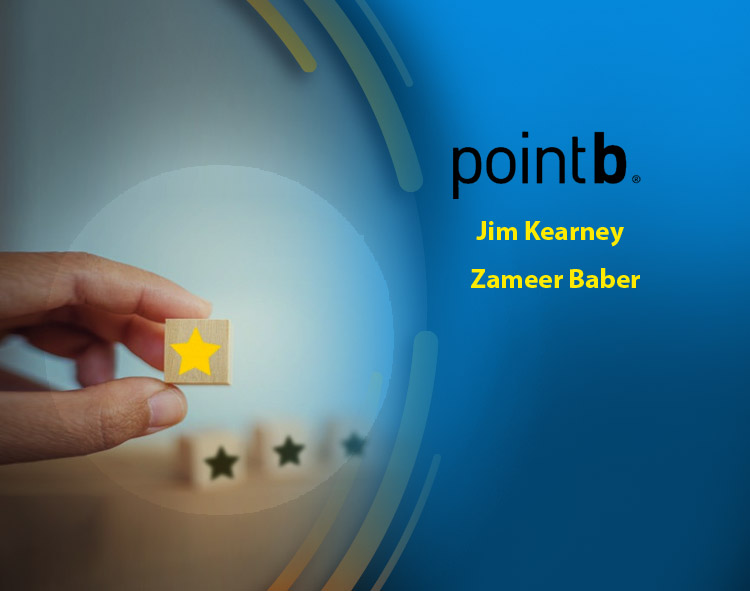Banks are facing unprecedented disruption from all directions. Leverage this disruption to gain a competitive advantage through innovative customer interactions.
Social distancing and the effects of COVID-19 have required multiple organizations to rethink and, in some cases, accelerate their customer experience initiatives. Financial services firms are no different. Moving forward, finding ways to deliver new and existing offerings through an effortless client experience is top of mind for retail banks, asset management firms and financial services enterprises.
Read More: GlobalFintechSeries Interview with Scott Cornell, CEO at SilverCloud Inc
While firms are dealing with the current customer experience (CX) challenges, they’re also trying to continue transformational initiatives that were already in flight prior to the crisis. Meanwhile, consumers in the space continue to demand personalized, targeted experiences based on their individual needs. However, the complexities associated with meeting the needs of multiple consumer generations creates a need for digital savvy and self-service CX that leverages consistent, omnichannel approaches, whether a customer engages online, through mobile form factors, in branch, or over the phone. But what is the best approach for doing so? What does it really mean to create an effortless interaction in this environment, through any of these channels and through a digital channel, specifically?
Challenges – and Benefits – of Effortless CX in FSIs
In delivering effortless interactions, banks are at a disadvantage compared to other industries due to regulatory obligations and constraints. As a result, data cannot flow across technologies as seamlessly as it can in retail and media companies due to KYC and AML concerns. The more checks and balances, the more inhibitors there are to seamless experiences.
Read More: GlobalFintechSeries Interview with Ernest Rolfson, Founder and CEO at Finexio
Financial services firms are traditionally fragmented and siloed by lines of business or function, often moving in different directions at different times. Data and technology are not leveraged to maximum potential, and most teams do not have thought leaders who will push the boundaries of creative thinking.
Another challenge is determining the ROI of effortless CX. Traditionally organizations prioritize using age-old calculations of ROI based either in reducing operating expense or increasing revenue. This reinforces the old ways of working where sub-organizations “own” budgets without seeing the broader, enterprise level picture.
Recognizing that most companies cannot switch entirely away from traditional ROI metrics to rationalize digital investments, consider adding “effort” as an additional metric to rationalize innovation. Incorporating effort into the prioritization process may also yield opportunities that may not fall in line with traditional ROI but could be activated through opportunity or R&D budgets.
Read More: Emergency Preparedness: Understanding Your Company’s Cash Position
There are many ways effortless CX can benefit banks. One example is improving customer loyalty. The banking space, specifically, has historically seen low levels of customer turnover due to inertia and the hassle of making the change, among other factors. As digital banking interactions increase and CX improves, it’s now far easier to switch from one bank to another. Banking clients demand better online experiences and services in today’s world – and will switch providers without hesitation if they don’t receive it. Expectations that clients will stay at the legacy provider for the next 15-20 years are dated. Reducing effort is synonymous with increasing loyalty. A recent survey from Gartner showed that 96% of customers become disloyal to an organization when they perceive that experiences involve high effort.
With the COVID-19 situation, online adoption across all population segments has increased substantially. This is likely a permanent change in customer behavior. Consider bringing together marketing, sales, digital, and customer support data to fully understand customers’ interactions. Customers do not experience interactions through organizational silos, but rather as a whole. As such, investments should reflect simplification of all experiences across the customer lifecycle. Don’t be tempted to view investments as a way to increase revenue or decrease operating costs. Relying on these metrics alone will likely reinforce investments only within organizational silos which have set age-old KPIs.
Read More: A Quick Solution To Recession-Proof Your Business!
In a strong economy, investments in digital have typically focused on increasing revenue. In a weak economy, investments in digital have traditionally focused on reducing operating costs. With the COVID-19 situation, companies have been forced to quickly re-baseline their investments to optimize savings. When the economy rebounds, companies will again have to re-baseline investments towards increasing revenue. Continuous re-baselining of investments to market conditions will only hamper focus on long-term technology goals. Given the pace of change for technology, stay ahead of the curve by continuing to invest in new capabilities. The data shows that understanding effort is a way to identify opportunities that both increase revenue and decrease costs. Companies that can truly drive innovation for the long-term are the ones that can invest in capabilities that are relevant in any market environment. Embracing effortless interactions that improve the CX is the best way for banks to stay ahead of the competition, in any market environment, by delivering an experience that consumers find easy and, in this environment, safe.
About the authors
Jim Kearney and Zameer Baber are consultants with Point B, Jim Kearney is a financial services executive with an extensive background implementing major strategic business solutions at multiple organizations, with experience in wealth management, asset servicing, and asset management. Zameer Baber works with organizations to design and execute digital transformation, with culture as the foundation for transformation.
